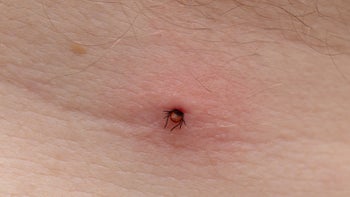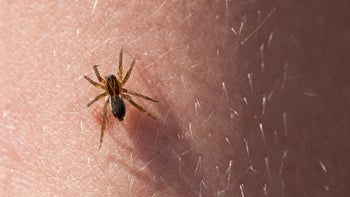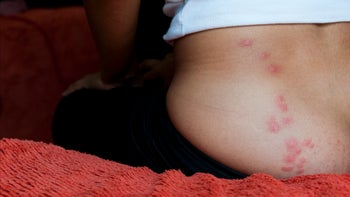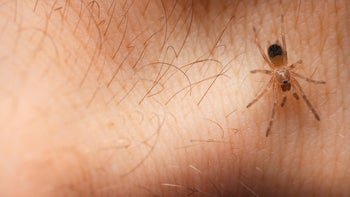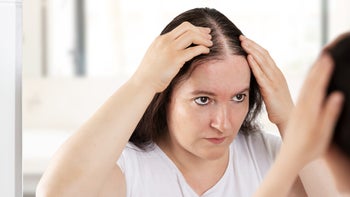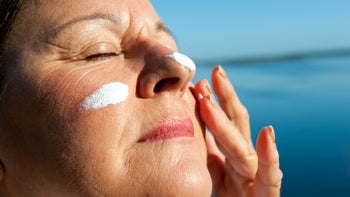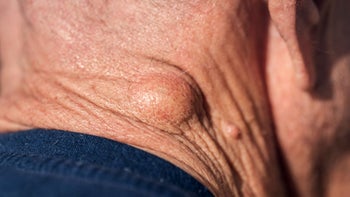
Pimple Patches: Do They Work, and Are They Right for You?
Key takeaways:
Pimple patches absorb excess oil and impurities from pimples while creating a protective barrier to keep bacteria out.
Although pimple patches are a convenient and easy way to treat pimples, their effectiveness varies. And some patches can cause skin irritation.
Talk to your dermatologist about the best treatment appropriate for your skin and acne type.
Few things are more frustrating than a glaring pimple on your face. Whether you’re dealing with one zit or an acne breakout, you’ve likely researched ways to get rid of pimples.
Enter pimple patches — also called acne patches or zit stickers. These popular patches are small, thin stickers that promise flatter acne and clearer skin. While they may be helpful, pimple patches don’t work on all types of acne.
How effective are pimple patches?
When used correctly, pimple patches can be an effective and convenient solution to treat certain types of pimples.
One Prescription + One Pump + Once a Day
Introducing CABTREO: the treatment that has clindamycin phosphate, adapalene, and benzoyl peroxide all in one topical application. Now cash pay patients pay no more than $100 using GoodRx.

A small study found that hydrocolloid patches effectively reduced redness, oily secretion, and dark spots in people with mild or moderate acne. Another study suggests people with facial acne had less acne and dark pigmentation after using dissolving microneedle patches for 28 days. But, these were small trials, and more research is needed to confirm the effectiveness of pimple patches.
Still, most of the benefits of pimple patches may be from their protective barrier property. If you’re dealing with acne, you were likely told that pimple popping is a no-no.
That’s because squeezing or popping your acne can cause it to take longer to clear and result in dark spots and scarring. With a pimple patch on and by keeping your hands off your zits, you’re allowing your skin the chance to heal naturally, all while lowering your risk of infection.
But, some people may not see any results after using pimple patches. Pimple patches only work on the surface level of your skin and are not appropriate for all types of pimples. And since there are many types of patches — like non-medicated, medicated, and microneedle patches — you need the right patch for your acne.
For example, patches that contain hydrocolloid only may work for acne that has a “head” or has popped. But those with added anti-acne ingredients may be more appropriate for those red and inflamed pimples. And if you’re struggling with acne cysts, which are deeper in the skin, pimple patches may not be effective.
In any case, it’s best to see a dermatologist to figure out the best treatment for your acne, pimples, and skin breakouts.
Read more like this
Explore these related articles, suggested for readers like you.
How do pimple patches work?
Pimple patches work by absorbing excess oil and pus from pimples. They essentially shrink the zits and lessen inflammation. They’re commonly made of hydrocolloid, a gel-forming material originally used for wound healing. Hydrocolloid may draw out impurities from pimples while providing a moist environment that can help acne spots heal faster.
A pimple patch can also lower the risk of your pimple getting infected — or re-infected — because it creates a protective barrier. When you have a pimple patch on, you’re less likely to pick at the area and introduce bacteria.
Along with hydrocolloid, some pimple patches are medicated with acne-fighting ingredients, like:
Salicylic acid
Benzoyl peroxide
Glycolic acid
Niacinamide
Some types of patches have dissolving microneedles that slightly puncture the skin’s surface to allow the added ingredients to penetrate the skin.
You can buy pimple patches without a prescription online or over the counter (OTC) in a store.
These patches come in various shapes and sizes and can be applied during the day or at night, followed by the rest of your skincare routine.
Most pimple patches are transparent, which means they’re invisible and can be worn under makeup. But, if you’re looking for something more fun — like a bright yellow star-shaped zit sticker — that’s also available.
What are the side effects of pimple patches?
While pimple patches are generally safe, they may cause side effects such as:
Skin irritation: You may see redness or dryness around the area where the patch is applied. This is especially true for patches with added ingredients to treat acne.
Allergic reaction: It’s possible to develop an allergic reaction to the materials used in the patch. For example, the adhesive or any of the acne-fighting medications in the patch may aggravate your skin or cause hyperpigmentation.
Although extremely rare, some people have had serious allergic reactions to acne products. Get medical care right away if you develop symptoms like:
Trouble breathing
Face, eye, lip, or tongue swelling
Hives
Tightness in your throat
Want to try pimple patches? Your dermatologist can help you pick the best pimple patch based on your skin type and acne.
If seeing a dermatologist is not an option, do a patch test first. Start by applying one pimple patch for a few hours to see how your skin reacts before moving on to a larger area. If you experience any reactions, stop using the patch and let your healthcare provider know right away.
How do you use pimple patches?
Pimple patches are quite easy to use. Follow these steps for the best results:
Cleanse and completely dry your skin.
Make sure your hands are also clean to avoid contaminating the patch and your skin.
Select the appropriate patch size.
Peel off the patch taking care not to touch its center.
Apply the patch directly over the spot.
Leave the patch on based on the instructions on the package.
Peel off the patch and discard.
Wash the area and apply a new patch if needed.
How long do you have to use pimple patches to get results?
Most pimple patches can be used and changed as needed until the pimple has fully healed — which may take a few days. The duration depends on many factors, such as:
The type of patch you’re using
The type of acne being treated
Your skin type
The manufacturer’s recommendations
How long you need to wear a patch will vary by brand. Microneedle and medicated pimple batches need to be worn for at least several hours. Non-medicated hydrocolloid patches may be worn for 2 to 3 days, as long as you change the patch every day.
Remember to cleanse and dry the area before applying a new patch. For the best results, follow the directions specific to the patch you’re using.
Who should not use pimple patches?
It’s better to avoid using pimple patches if you have sensitive skin. This is also true if you’re allergic to adhesive or any acne product that may have been added to the patch. In this case, don’t use pimple patches, and discuss your treatment options with your dermatologist.
If you’re breaking out a lot or have more serious acne, pimple patches may not be your best option. You may need stronger OTC or prescription medications.
Alternatives to pimple patches
If using a pimple patch is not an option for you, consider these alternatives and tips to manage your acne:
Topical acne treatments: These include OTC benzoyl peroxide or salicylic acid that can be applied directly to the acne or your entire face. They help get rid of dead skin cells and kill bacteria. You can also try using an OTC retinoid, like adapalene (Differin), to help unclog pores. Just keep in mind adapalene is not a spot treatment. It needs to be used for at least 4 to 6 weeks for best results.
Oral medications: Antibiotics or isotretinoin (Absorica) can be prescribed by a dermatologist to help clear up cystic acne. Birth control pills and spironolactone (Aldactone) are treatment options that also need a prescription.
Good skin care: Use a gentle cleanser to wash your skin. Choose skin care products that are free of oil and alcohol and won’t clog pores (non-comedogenic).
Hands off: Resist the urge to pop or squeeze your acne and avoid touching your face throughout the day.
Being patient: It may take a few weeks to see results, so give your treatment time to work.
The bottom line
While they’re not a long-term solution, pimple patches may help lessen the appearance and duration of your pimples. But they don’t work on all types of acne.
When choosing a pimple patch, be sure to read the ingredients and follow the instructions carefully. If you’re unsure which pimple patch is appropriate for you or if you have sensitive skin, talk to your dermatologist before using these patches.
Why trust our experts?



References
Abrahamson, R. P. (2020). Can hydrocolloid bandages help with acne? Dermatologists weigh in on TikTok trend. Today.
American Academy of Dermatology Association. (n.d.). Acne products: How to avoid allergic reaction.
American Academy of Dermatology Association. (n.d.). How to treat different types of acne.
Chao, C. M., et al. (2006). A pilot study on efficacy treatment of acne vulgaris using a new method: Results of a randomized double-blind trial with Acne Dressing. Journal of Cosmetic Science.
Holmes, S. P., et al. (2021). Hydrocolloid dressing versus conventional wound care after dermatologic surgery. JAAD International.
Ludmann, P., et al. (2022). Acne: Tips for managing. American Academy of Dermatology Association
Nuutila, K., et al. (2021). Moist wound healing with commonly available dressings. Advances in Wound Care.
Qothrunnadaa, T., et al. (2021). Patches for acne treatment: An update on the formulation and stability test. International Journal of Applied Pharmaceutics.
Tai, M., et al. (2022). Acne and its post-inflammatory hyperpigmentation treatment by applying anti-acne dissolving microneedle patches. Journal of Cosmetic Dermatology.







